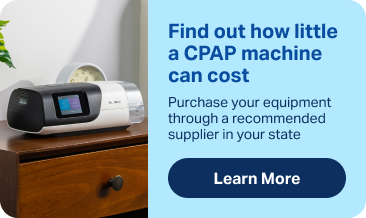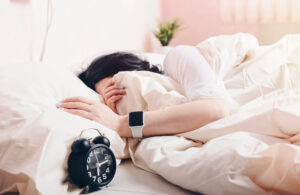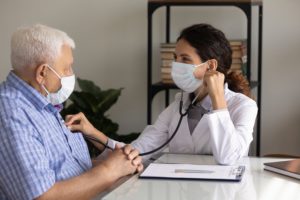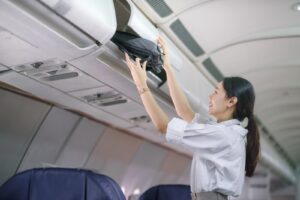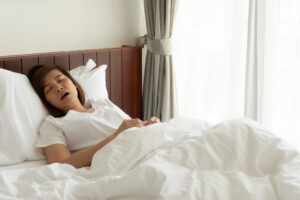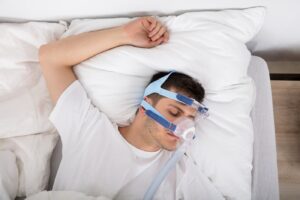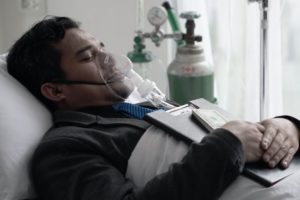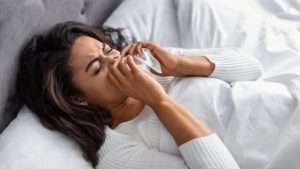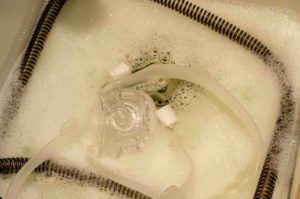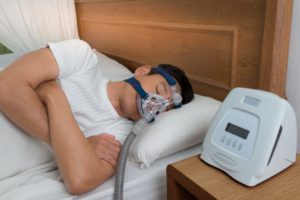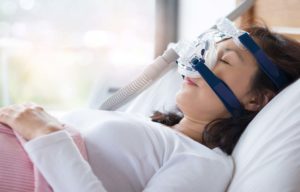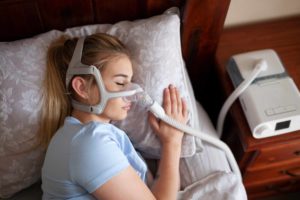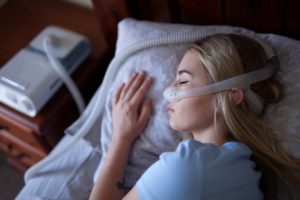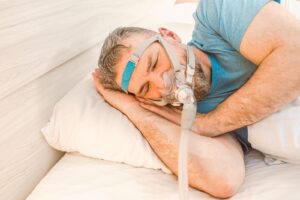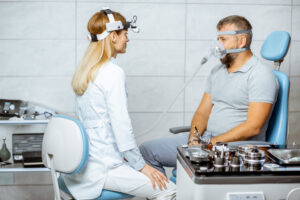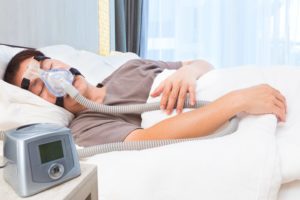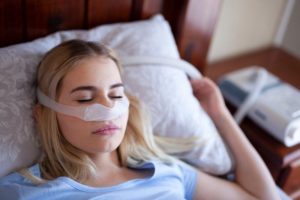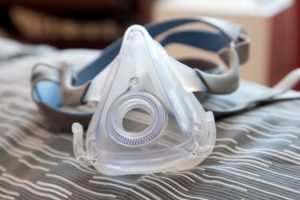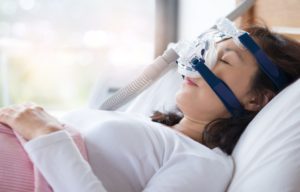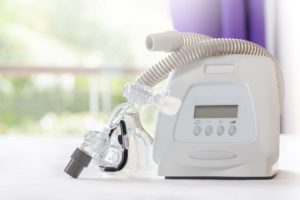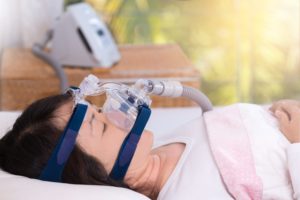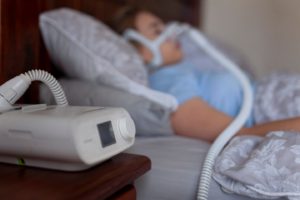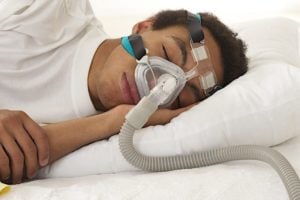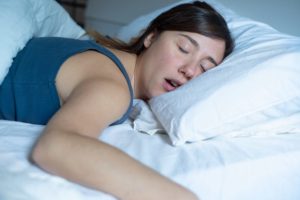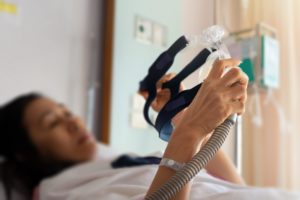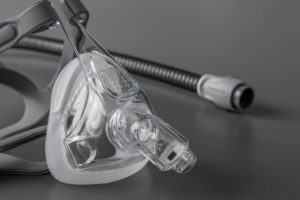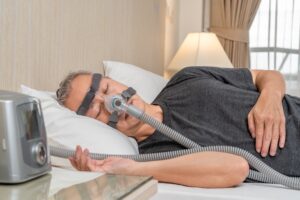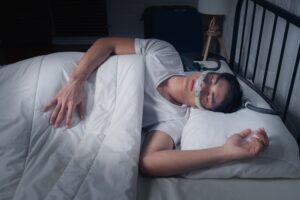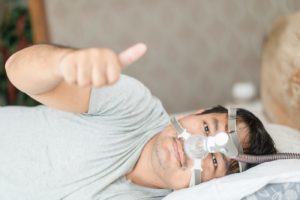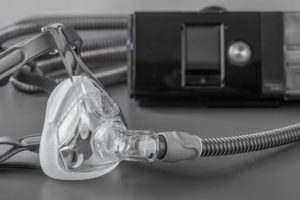When you buy through our links, we may earn a commission. Products or services may be offered by an affiliated entity. Learn more.
How to Buy a CPAP Machine
- When buying a CPAP machine, you have a few different options, including where to buy it and if you want to go through insurance or not.
- In most cases, health insurance will cover or partially cover the costs of CPAP machines and accessories.
- If you have a high deductible plan, it may be worth shopping around and buying your own CPAP equipment since it can be less expensive. Replacement parts may also be cheaper out of pocket.
If you’ve been prescribed CPAP therapy for your sleep apnea, the first thing you’ll need to figure out is how to buy a CPAP machine, a device that produces mild air pressure that you breathe in through a mask to help keep your airways open while you’re asleep .
While it can take a bit of getting used to, once patients begin using CPAP machines regularly, they often find it improves their sleep quality and helps them get the rest they need. That’s why it’s so important to make sure you’re buying a CPAP machine that best fits your symptoms and lifestyle, along with finding the appropriate CPAP mask and other accessories.
Use this guide to help you navigate the process of how to buy a CPAP machine, the role insurance coverage plays, and which CPAP accessories can help you get the most out of CPAP therapy.

Exploring CPAP Machines — But Haven’t Been Tested Yet?
Start with our easy, at-home sleep test. It’s stress-free and effective. Get results within a few days.
Requirements for Buying a CPAP Machine
Buying a CPAP machine isn’t something you can just do on your own. You’ll first need to consult a doctor and go for a sleep test. From there, if your doctor determines that you have sleep apnea, they’ll likely give you a prescription for CPAP therapy. After that, you may decide to buy a CPAP machine and accessories using health insurance.
Sleep Apnea Diagnosis
Obstructive sleep apnea (OSA) is diagnosed using a sleep study, which evaluates your heart rate, blood oxygen levels, breathing patterns, and how frequently you stop breathing or wake up during the night. As the name suggests, this data is all measured while you’re sleeping.
Two types of sleep studies are used to diagnose OSA: nocturnal polysomnography (PSG) and at-home sleep apnea tests .
CPAP Prescription
Whether you get diagnosed in a sleep lab or do an at-home sleep study, your CPAP machine will require a prescription. A sleep specialist will analyze your test results and send them to your doctor for review. Your doctor can then recommend the best CPAP machine and mask based on your data.
A CPAP machine can only be purchased with a prescription from a doctor or sleep specialist . If you suspect you have sleep apnea, you can talk to your doctor about getting a sleep study done.
Optional: Health Insurance Coverage
Most health insurance plans cover some of the cost of CPAP machines, as they fall under the durable medical equipment (DME) category. To determine eligibility and coverage, providers will usually refer to your apnea hypopnea index (AHI), since it’s considered to be a way of measuring the seriousness of a condition.
If you qualify, you may have to meet your minimum deductible before your CPAP equipment is covered, and your equipment options might be limited. Plans will often reimburse the entire cost of the machine but only provide partial coverage for CPAP accessories like masks, tubing, and filters. Other providers may require that you rent a machine for a certain amount of time before purchasing. (You can see our list of recommended CPAP suppliers here.)
In order to keep your coverage, your CPAP usage may be monitored or need to be documented by your doctor. If you’re not using your machine regularly, your provider may terminate coverage or ask that you return the device.
With Medicare, assuming your doctor and the CPAP supplier are enrolled in the program, you are typically eligible for a three-month trial period that includes devices and accessories. After the trial, if your doctor concludes that CPAP therapy is improving your condition, coverage can continue. Once you meet your Plan B deductible, Medicare can cover 80% of the machine rental and accessories. After 13 months of adhering to your therapy, the machine may be yours to keep.
Note that some suppliers may require you to pay your share upfront, and then you can submit a claim to be reimbursed.
Where to Buy a CPAP Machine
Once you’ve obtained a prescription, you can purchase a CPAP machine through your insurance provider, a local clinic, a third-party retailer, or directly from the manufacturer. Each option has its pros and cons.
DME Provider
Many patients shop for CPAP machines through a DME provider. If you are going through insurance, including Medicare, they’ll likely require that you choose from a list of approved DME suppliers to work with.
On the plus side, because DME providers work exclusively with medical equipment and insurance companies on a regular basis, it should be a more streamlined experience, as far as paperwork and approvals go. This is also one of the main options if your insurance requires you to rent the machine for a period of time rather than buy.
The downside of DME providers is they usually have a limited number of models to choose from, and may offer less competitive pricing than other retailers.
Online Retailers
CPAP machines and equipment are widely available online at places like Amazon, for example. In some cases, and depending on your deductible and coverage, you may be able to find less expensive machines and accessories such as replacement masks, especially if you shop online and pay out-of-pocket. You’ll also have a bigger selection of products and can read online reviews to help you make a decision.
What you won’t have is any opportunity to try items in advance or get personalized recommendations from a specialist like you might if you went into a physical medical supply store. You also won’t have any support with insurance paperwork, so if you’re filing reimbursement claims, you’ll be responsible for that.
Insurance Provider
Going through your insurance provider to get your CPAP machine and equipment could offer some level of convenience. However, in many cases, you may pay more for the machine and the accessories than you would by using a third party. This is especially the case if you’re paying long-term rental fees that end up higher than the cost of the actual machine if you had bought it .
Insurance providers will usually monitor your usage and may deny coverage if you are not keeping up with your therapy. Some patients might feel this kind of monitoring is an invasion of privacy.
Types of CPAP Machines
Your physician will recommend the best type of positive airway pressure therapy (PAP) for you based on the results of your sleep study. While a CPAP machine is usually the first choice for sleep apnea, other PAP devices like bi-level positive airway pressure (BiPAP) and auto-titrating positive airway pressure (APAP) are also sometimes prescribed.
CPAP
CPAP stands for continuous positive airway pressure, which means the same amount of air flows through at all times. It is the most common type of therapy used.
APAP
The auto-titrating PAP adapts the level of air pressure as needed following your breathing patterns. This machine is more complex and comes at a higher price point.
BiPAP
The bilevel positive airway pressure has two levels of air that flows through: one for inhalation, and one for exhalation. This therapy can help with various breathing disorders.
Travel CPAP
This is a compact, more portable version of a CPAP machine that can help patients continue treatment when they are away from home.
CPAP Accessories
CPAP machines require certain accessories like face masks and tubing. Other components are optional but may enhance comfort and performance.
Finding a suitable CPAP mask is critical to successful therapy. The mask creates a secure seal over the user’s nose or nose and mouth to prevent air leaks. There are three main types: nasal, nasal pillow, and full-face. Your doctor can recommend a style based on factors like sleep position and breathing style.
While most CPAP machines are sold on their own, manufacturers often offer bundles that include masks, hoses, and filters. Replacement parts and optional accessories like humidifiers and cleaning solutions are generally sold separately.
Essential CPAP Accessories
Masks, hoses, and filters are all fundamental to operating a CPAP machine. Each provides a different and equally important function when it comes to delivering safe and effective PAP therapy.
CPAP Masks
A CPAP mask incorporates three components: a frame, cushion, and headgear.
- The frame is what connects the cushion, tubing, and headgear to create a secure fit over the user’s face. Frames come in different designs and sizes to accommodate varying head shapes, sleep positions, and breathing styles. Full-face masks, nasal pillows, and nasal masks are the most common types.
- A cushion creates a seal over the user’s mouth and nose to prevent air leaks, while nasal pillows do the same for only the nostrils. Cushions and nasal pillows come in different sizes and are made from soft and flexible materials like silicone.
- Headgear includes adjustable straps that fit around your head to secure the mask. They usually attach to the mask via velcro or clips.
CPAP Hoses
A CPAP machine pumps pressurized air through a hose that’s connected to a mask. Hoses come in non-heated and heated options. Heated hoses are designed to humidify pressurized air and reduce condensation. They can minimize symptoms associated with dryness, like nosebleeds and sore throats.
CPAP Filters
A filter purifies the air, protecting both you and your CPAP machine. Filters are designed to prevent mold, pollen, dust mites, and other contaminants from entering your lungs while you use your machine.
Filters come in disposable and non-disposable options. Some machines are only compatible with one type of filter, while others accommodate both. People with allergies or recurring sinus infections may want to opt for in-line bacteria filters. These disposable, ultra-fine filters collect bacteria and viruses before they enter your mask.
Optional CPAP Accessories
While not necessary, some CPAP accessories like mask liners and humidifiers can enhance user comfort. Optional components aren’t usually included with CPAP bundles but can be purchased separately.
Not all accessories are compatible with every CPAP machine. Always refer to the product manual for your machine before purchasing additional accessories.
CPAP Mask Liners
A mask liner provides a comfortable fabric barrier between your face and your mask. Liners can offer much needed relief for people who experience skin irritation or indentation marks with CPAP masks. Liners can also reduce air leaks by helping you achieve a snug fit.
Humidifiers
CPAP therapy can dry out the nasal passages, causing side effects like nosebleeds, dry mouth, and sore throats. Humidifiers use a water tank filled with distilled water to moisturize the air. Optimizing air moisture can alleviate symptoms caused by excessive dryness.
Some CPAP machines have built-in humidifiers, while others are external. Similar to CPAP hoses, humidifiers can be non-heated or heated. Heated humidifiers add warmth and moisture to the pressurized air and can benefit those living in dry climates.
Humidifier Reservoir Replacements
Cleaning the humidifier reservoir daily is crucial to preventing bacterial growth. The water chamber should be replaced about every six months, or sooner if it starts to show discoloration or other signs of wear. Most CPAP manufacturers sell replacement parts like water chambers.
Heated CPAP Hoses
Heated hoses increase air temperature by using an electric current. Like a humidifier, heated hoses are intended to reduce symptoms related to dryness. Users can adjust the temperature based on their dryness levels and ambient room temperature. Heating hoses can also prevent excessive condensation, known as “rainout.” Excess moisture in the hose can leak into your mask and cushion, which can be annoying and uncomfortable.
Hoses should be replaced about every three months.
CPAP Cleaners
CPAP equipment can usually be cleaned with mild dish soap, vinegar, and warm water. There are also sanitizers designed specifically for CPAP components, but they can be quite pricey. Furthermore, these cleaning solutions aren’t necessarily more effective at killing bacteria and other contaminants. Water-free CPAP cleaners are particularly controversial and are not FDA-approved.
Always refer to the manufacturer’s manual, as cleaning instructions vary according to model and component. Regular equipment cleaning is essential to healthy and effective CPAP therapy.
Chinstraps
A chinstrap is an elasticized band that helps keep your mouth shut while you sleep. They are especially helpful at preventing air leaks for mouth breathers who wear nasal masks.
CPAP Pillows
CPAP pillows are pillows designed with cut-outs that make wearing a mask more comfortable. Some are shaped specifically for side sleepers so that the mask doesn’t cause painful facial indentations during the night. Others are more geared toward support and stability to prevent air leaks.
A CPAP pillow is not the same as a nasal pillow, which is a type of CPAP mask.
CPAP Batteries
CPAP machines generally require an electrical outlet to operate, but some models work with external batteries. Deep cycle and lithium-ion batteries are popular options that make CPAP therapy possible while camping or away from home.
Frequently Asked Questions
Can I buy a CPAP machine without a sleep study?
A CPAP machine requires a prescription , and you’ll only get one after a physician has conducted a sleep study to determine that you have sleep apnea. Therefore, you cannot buy a CPAP machine without a sleep study.
Can you buy a CPAP machine over the counter?
No, you cannot buy a CPAP machine over the counter. While you can purchase a CPAP machine without going through your health insurance, you will still need a prescription to do so.
How long does it take to get a CPAP machine?
The amount of time it takes to get a CPAP will vary based on when you are diagnosed and if you are going through health insurance. You will first need a doctor to conduct a sleep study and determine that you have sleep apnea and can benefit from CPAP therapy. At that point, you will get a prescription. If you’re going through your health insurer, it may take a couple of weeks to get approved.
Then, you’ll have to order what you need via an approved DME supplier or the insurance company, and shipping may take a few days. If you decide to purchase the machine on your own through a retailer, that may speed up the process by several days.
How much does it cost to buy a CPAP machine?
CPAP machines range in price depending on the features and model, but generally, they start at around $500 and can go as high as $1,000 or more. Accessories are sometimes bundled in, but if not, expect to spend an additional $100 or so for masks and tubing.

Still have questions?
Our product experts have extensive experience testing just about every sleep product on the market. Send an email to AskAnExpert@sleepfoundation.org or call us at (877) 672-8966 with your questions and we’ll help you find exactly what you’re looking for.
References
4 Sources
-
NIH. CPAP – CPAP | NHLBI, NIH. www.nhlbi.nih.gov. Published 2022. https://www.nhlbi.nih.gov/health/cpap
https://www.nhlbi.nih.gov/health/cpap -
Goyal, M., & Johnson, J. (2017). Obstructive sleep apnea diagnosis and management. Missouri Medicine, 114(2), 120–124.
https://pubmed.ncbi.nlm.nih.gov/30228558/ -
American Academy of Sleep Medicine. (2018, October 19). FDA reclassifies positive airway pressure as a Class II medical device.
https://aasm.org/fda-reclassifies-positive-aiway-pressure-class-ii-medical-device/ -
American Academy of Sleep Medicine Sleep Education (2025). Positive Airway Pressure and Your Insurance: What You Should Know.
https://sleepeducation.org/patients/pap-and-insurance/


